#and in the context of the album you can CLEARLY see that arrow is about how the human heart has a very hard time being satisfied
Explore tagged Tumblr posts
Text
sorry not sorry but its twisted that people take Christian media and try to twist it around to fit and affirm their gender ideology
#this post is about half•alive btw#people are like oH yAY aRRoW iS aBouT bEInG arOSexTuAL#how about you shut up and actually look at the lyrics#and look at the song IN THE CONTEXT OF THE ALBUM#bc you should NEVER take things out of context#and in the context of the album you can CLEARLY see that arrow is about how the human heart has a very hard time being satisfied#with where it is at any time#bc of our human longing for Eden#and the point of the song is that if that longing gets overtaken by our flesh#then its a bad thing#but if we allow God to direct the arrow of our hearts towards Him#its a beautiful thing#by throwing all for that away for 'oh arrow sounds like aro!'#' 'the hardest place to be is right where you' are is talking about identifying as an aroace!'#you are ripping the soul out of the song and then it has no legs to stand on#listen I love half•alive's instrumentals more than anybody#you kinda have to like the instrumentals to love a song#I'm not going to listen to a song I don't like if it only has good lyrics but a trashy sound#but with music and with every single thing in life the substance of it SHOULD BE THE MOST IMPORTANT THING#I'm not going to read a book that has beautiful description if its rotten at the core#I'm not going to watch a movie that's funny if its advocating for hate crimes#and same with music#so if the core message of that media is not something you like#DONT CHANGE IT JUST TO SUIT YOU#DONT PROJECT ONTO SOMETHING THAT IS LITERALLY SACRED FOR OTHER PEOPLE#get your own media that's giddy over that stuff#don't walk into my house and disrespect my Father and expect to get away with it#sunkissedliterarylightofchrist#also while we're on the topic:#have you ever considered that Christian music sounds so good BECAUSE ITS BEEN BLESSED BY THE LORD????
5 notes
·
View notes
Text
John Coltrane's improvisation style analysis (sheet music incl.)
John Coltrane's improvisation style analysis (sheet music incl.)John Coltrane - I Want To Talk About You (LIVE improvisation) Best Sheet Music download from our Library.Conclusion Please, subscribe to our Library. Thank you!
John Coltrane's improvisation style analysis (sheet music incl.)
John Coltrane - I Want To Talk About You (LIVE improvisation) https://youtu.be/ADPm-3JMbwo Pattern in melodic improvisation and harmonic progression in the music of John Coltrane. John Coltrane (1926-1947) was a leading African-American jazz musician, performing mainly on tenor and soprano saxophones. Coltrane's music is renowned for its fiery creativity and the saxophonists visceral approach. This uninhibited style has led some listeners to be dismissive of his style, considering his note choice to be random and meaningless. This is particularly true of his more unhinged performances, such as the seminal free jazz album Ascension and the cadenza which follows his performance of "I Want to Talk about You" on the album Live at Birdland. The words of Associate Editor of prominent jazz publication Downbeat, John Tynan, who stated (Down Beat Magazine,) on listening to a 1961 performance of the saxophonist, "that listened to a horrifying demonstration of what appears to be a growing anti-jazz trend exemplified by those foremost proponents of what is termed avant-garde music" exemplify this trend. Coltrane's motivation for playing these kinds of free cadenzas is touched upon in The New Grove Dictionary of Jazz, where it is stated that in pieces such as Giant Steps, Coltrane, by seeking to escape harmonic clichés
had inadvertently created a one dimensional improvisatory style. In the late 1950s, he pursued two alternative directions. First, his expanding technique enabled him to play what the critic Ira Gitler called sheets of sound. It is these sheets of sound that can be heard clearly in the cadenza to I Want to Talk About You. Furthermore, Barry Kernfeld comments that such flurries
.... disguised his excessive reiteration of formulae. By revealing Coltrane's techniques, we think we may inspire many modern Jazz improvisers and musicians. Coltrane's cadences

If we analyze the above section in depth, it is possible to see it as implying a II-V-I cadence typical of the jazz idiom, one that Coltrane would have been very familiar with. An example of such a cadence would be the Dm7 G7 Cmaj7 that comes in the last 4 bars of a conventional jazz 12 bar blues in C major. This extract is to some degree a pastiche of the clichéd jazz lick shown below, which is often played over a II-V-I cadence.

Particularly from bar 5 in Coltrane's phrase, we see the guide tone of F# (implying the chord of G minor with a major 7th) descend to an F (implying G minor with a lowered 7th) and then to an E (forming the 3rd of C7). Fig. 3 above indicates these common guide-tones with arrows. A scale that jazz musicians commonly use over dominant seventh chords is the altered scale. This scale is a mode of the melodic minor scale, and is formed by starting on the leading note of that scale.

Over a tonality of G7, this scale emphasizes all the notes that are outside the conventional sound of the chord, and so is typical of harmonically complex jazz. In How to Comp, Hal Crook describes this effect as altered tensions (Hal Crook, How to Comp, (Advance Music, 1995) p.17). Notably, the 3rd (B) and 7th (F) are not altered, as this would too drastically change the function of the chord. In addition to playing the scale linearly, one can also derive a number of shapes and patterns from it. Just as we can derive F and G major triads from the C major scale, we can derive C# and D# major triads from the G altered scale. Below, we see how both Ab and Bb(A#) minor triads are also built into the altered scale.

It is the minor triad that is built on the b2 of the scale that Coltrane uses in this extract.

Here we see, in the context of a C dominant seventh chord, a C# minor triad. This is a clear indication of Coltrane deriving the minor triad shape from the C altered scale. We can see many examples of Coltrane superimposing harmony over existing chord changes outside this cadenza. Coltrane will often use triadic or arpeggaic constructions as these are often the clearest ways to describe harmony. An example might be bars 9-12 of the saxophonists solo on Blue Train from the album of the same name. Blue Train, as its name suggests, is a 12 bar-blues in the key of Eb. Therefore, the last 4 bars of each 12 bar chorus contain a II-V-I cadence in the key of Eb. In his solo, Coltrane does not stick rigidly to the chords of Fm7 - Bb 7 - Eb 7, but instead implies contrasting harmony over the top.

The key section is shown with the square brackets. In this section, Coltrane is not using the altered scale over the C7 chord, as the F natural used in the line does not fit into that scale.

Instead, it appears that Coltrane is implying a minor plagal cadence over the chord changes. Since a plagal cadence is the resolution from chord IV to chord I, a minor plagal cadence is the resolution from chord IV minor to chord I. In this case, that resolution is from the clear Bb minor shape indicated by the square brackets to the F natural that is the first note of the next bar. This example demonstrates that Coltrane was not limited to altered scale vocabulary in his harmonic language. Repeating Motifs In the cadenza, Coltrane does repeat certain ideas that demonstrate that his improvisation is to some degree based on things that he has assimilated and practiced rather than being completely wild and free. One such motif is heard twice, once at (06:16) and again at (06:24).

If we assume that this pattern is derived from a diatonic scale or mode, there are several possible harmonic interpretations of it. The one I thought of at first was that it could imply the tonality of G Lydian.

Similarly, it could be descriptive of the church modes of D. On the other hand, the notes of the motif fit into the scale of E melodic minor.

These and other interpretations are possible, and nobody can definitely state what Coltrane was thinking. However, Mornington Lockett has suggested that the motif could imply several of the altered tensions over the chord of Eb 7. All the notes of the motif fit into the Eb altered scale. Remember that the altered scale is the same as the melodic minor scale a semitone up, and so just as the motif fits into E melodic minor scale, it fits into the Eb altered scale

This is possibly the most practical use of this shape for jazz improvisers, as dominant seventh chords are extremely common in jazz harmony. If we look at this motif in its historical context, there are several interesting things about it. The first is that we can see the late Michael Brecker, a celebrated saxophonist and devotee of John Coltrane's music, using an identical shape in bar 92 of his solo on the piece Pools by the jazz fusion group Steps Ahead.

The brackets indicate the relevant segment; we can see that it is simply a transposed version of the original Brecker construction. This pattern is well known and attributed to Brecker. On his website, Mornington Lockett refers to a version of this pattern as a classic Michael Brecker construction.

The relationship between Breckers pattern and the motif by Coltrane is clear. It seems very likely that Brecker, who is known to have transcribed a great deal of Coltrane's music, heard this motif (perhaps subconsciously) and created his version of it. This is a very exciting discovery, and it surely demonstrates how artists as great as Brecker are very much influenced by their own heroes, just like the novice jazz musician. Use of Triad Pairs The use of triad pairs is well documented in jazz. Several books exclusively cover this topic, such as Walt Weiskopfs Intervallic Improvisation: The Modern Sound and Gary Campbells Triad Pairs for Jazz. The most common technique is to alternate the use of two triads, creating a hexatonic (six note) scale. However, as Jason Lynn states in his article on the technique, in order for this approach to yield a hexatonic (six note) scale, the two triads must be mutually exclusive they must contain no common tones. This technique can create some very interesting colors of tonality. Below we see how two major triads (the most common pairing of triads) can produce, on a major chord, a Lydian or #11 sound.

Similarly, over a dominant 7th chord, two major triads can produce the sound of a suspended 4th, or, as it would be known to jazz musicians, a sus chord.

In Coltrane's cadenza on I Want to Talk About You we can clearly see his use of this technique.

Here we see the alternating of E minor triad and F major triad along with C augmented triad and Bb diminished triad.

Since Coltrane is not playing over a fixed chord sequence at this point, it is harder to decipher what tonality this triad pair implies. The most obvious would be that of C major with a #11, i.e. the church mode of C Lydian. Because a diatonic scale cannot contain 3 semitones next to one another, the missing seventh note from the hexatonic must be D, as either Db or D# would result in a non-diatonic scale. This would indicate that the tonality implied must be that of one of the church modes of C. However, as we will see by Coltrane's use of synthetic scales, there is no need for us to be bound to the conventions of diatonic scales in our analysis of his music.

In this example, the triad pairs are not mutually exclusive, and so together create a pentatonic scale rather than a hexatonic. This pentatonic is very interesting and could be used to describe several advanced jazz harmonic sounds.

This is perhaps one of the most attractive of its possible manifestations. In the context of a C7 chord, the pentatonic contains two altered tensions that are found in the altered scale that were covered in the first section of this essay. These are the b2 and #5 (Db and G#). In addition, the natural 3rd (E) and flattened 7th (Bb) mean that the chord's function is not obscured, the scale only colors it. This is a prime example of how the analysis of Coltrane's cadenza can produce material that is suitable for improvisers to absorb into their melodic and harmonic vocabulary. Use of Synthetic Scales Synthetic scales can be defined as non-diatonic scales, i.e. scales that are not modes of the major, harmonic major, harmonic minor or melodic minor scales. Examples of these are the whole-tone scale and the diminished scale. Classical musicians may know these same scales as Messiaens 1st and 2nd modes of limited transposition. Another example of a synthetic scale is the augmented scale. This is constructed of alternating minor thirds and semitones to form a six note scale (hexatonic). It can also be thought of as two augmented triads a semitone apart and so another example of the technique of triad pairs that has already been noted.

If the order of intervals is reversed so that the scale is now formed by repeating semitone-minor third, this new scale is called the inverted augmented scale.

The following extract can be analyzed and shown to be an example of Coltrane using the inverted augmented scale.

Further analysis can give an indication of the tonalities that Coltrane is implying in this phrase.

This shows how the shape of the augmented scale can be used to outline an augmented tonality, i.e. a chord containing a #5. One might say that we cannot be sure that Coltrane was thinking of this exact scale when improvising this extract. However, there is good evidence that the saxophonist was very familiar with this synthetic scale. In the book, The Augmented Scale in Jazz, Walt Weiskopf and Ramon Ricker admit that in examining improvised solos it appears to the authors that most soloists have used augmented scales and triads in an intuitive manner. It is doubtful that many of the players cited in this book have systematically tried to codify their use of this material. However, they go on to say that two players that might be an exception to this speculation are John Coltrane and Michael Brecker. The clearest indicator of Coltrane's familiarity with the augmented scale is his use of it in his composition One Down, One Up. This piece has a form of AABA and is comparable with Miles Davis composition So What in its use of only two chords each A section is Bb 7#5 throughout and likewise each B section is composed only ofAb 7#5.

As shown below, this extract from One Down, One Up contains all but one notes of the inverted augmented scale, and includes no tones extraneous to that scale.

Given that this melody was pre-composed and thought-out carefully, we can be almost certain that Coltrane was thinking of an augmented scale as the basis for his melodic material. Therefore, we can be confident that the examples of augmented scale material in the cadenza were intentional by the saxophonist. Use of the Three-Tonic Cycle To jazz musicians, John Coltrane's most infamous composition is surely Giant Steps. This piece is well-known for being a minefield for improvisers, who are often tested on their ability to successfully navigate the treacherous chord changes. In Giant Steps, instead of following most common jazz standards which modulate generally round the cycle of fourths or in tone and semitone shifts, Coltrane takes the major third as the basic for his harmonic movement. A number of common standards did contain elements of this kind of modulation, such as Rodgers and Harts Have you Met Miss Jones.

As we can see, the initial tonal center of B moves down a minor third to G by way of a traditional II-V-I cadence, typical of jazz harmony. Notably, in the 6th bar of this bridge the direction of the major third cycle changes, and the Eb tonal centre rises to G instead of going down to B. In Giant Steps, Coltrane took this technique to new extremes by using several patterns of modulation to traverse the chord sequence. He made frequent use of the technique of prefixing each new tonic center with its respective II-V cadence, or at least its dominant.

from Giant Steps In the extract notated below, we can see evidence of Coltrane using this system of modulation by major third in his improvisation.

At normal speed, this section sounds extremely chaotic, but on closer inspection, there is definite pattern in Coltrane's use of repeating shapes.

In the above analysis of the key passage from the middle of the extract, Mornington Lockett, an expert on Coltrane's work, has identified the tonalities that Coltrane is implying. We should keep in mind that Gb major is the relative major of Eb minor, and so for the purposes of this analysis we can treat them as indicative of the same general tonality. Therefore, we can state that the sequence of key centers inside the square brackets is B minor Eb minor G minor Eb minor G minor. These three centers (B, Eb and G) form an augmented triad, as they are each a major third away from each other. Read the full article
0 notes
Photo
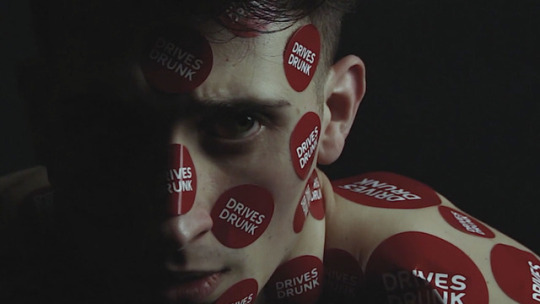
THINK - Week 1
Over the course of this week I have been trying to get ideas together for the YCN brief. My main goal was to fully analyse my audience and consider how I should approach the brief in their context. After an initial talk with our tutor, we decided as a group that we were going to go against the initial THINK strategies: dark, bloody adverts with victims flying over bars at 60mph and children narrating that their daddy killed someone.
I started thinking about the social stigmas surrounding drink driving. Since the first public campaign against it back in the 60s, the number of accidents caused by drunk drivers has dropped by over a half. These campaigns made drink driving socially unacceptable amongst older generations - I wanted to test out if there was a similar viewpoint in the 17 - 24 age category.

I sent out a group message to a ranged group of my 17-24 male friends asking them if they would allow me to use their profile photographs to create two fake tinder accounts. One for a safe driving persona, and one for a drink driving persona. Luckily I had a successful response with most of my friends agreeing to the experiment.
I experienced a minor hiccup after realising that in order to make separate tinder accounts for my friends, I would need 7 different phones. So to start off, I just made one. My friend Paul became Pablo. (Picassoh)
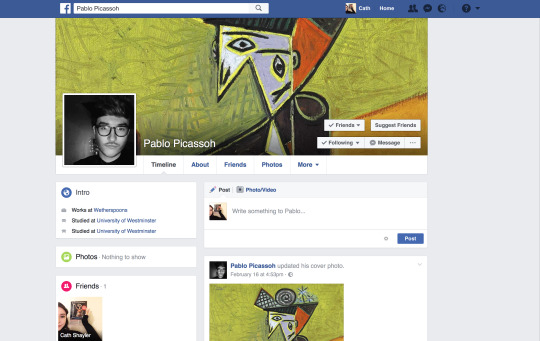
Fake Facebook account was needed in order to create a fake tinder profile.

Initial tinder profile. Pretty unrealistic as nobody would actually ever put this in their bio.

The safe driving account received 20 matches in 24 hours, and even a message of approval from one match...

I then changed the tinder profile, keeping every aspect the same apart from changing the I don't drink and drive statement to ‘I drive drunk’

Giving the account another 24 hours drunk driving Pablo came back with 11 matches, nearly half of what he had received the previous night.

This proved successful as a first experiment on the idea of drink driving as a socially unacceptable thing. The response was good from my friends who wanted to take part, so I think I will further it making a couple more tinder accounts over longer time periods so I have more substantial research at the end of the project.
Along the same theme of social unacceptability, I have ordered some stickers with he statement ‘I DRIVE DRUNK’ printed on them.
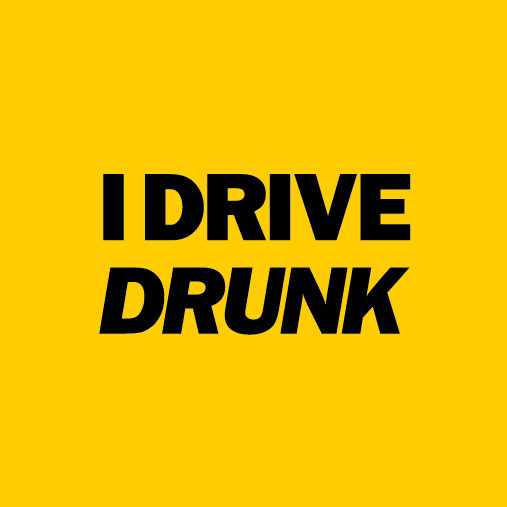
(Like that... but circular)
I plan to hand these out to members of the public next week as a social experiment - to see wether or not they would wear them. Hopefully they won’t, and i can continue a concept along the lines of ‘If you're embarrassed to broadcast it then why do it’.
Strapline idea: Drink drive? Social suicide.
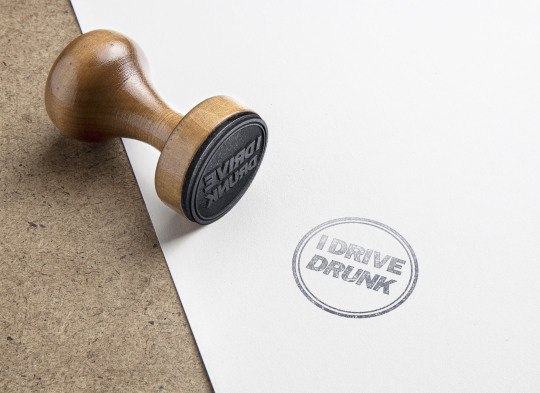
The sticker idea lead onto a possible advert concept, where upon entry to a club a boy is stamped with an ‘i drive drunk stamp’ the music goes off and all the chatter stops - a clear awkward vibe overcomes the whole scene.
When presenting my ideas to the group it was clear that the concept of being revealed as a drunk driver to be something humiliating or embarrassing worked. I’m now thinking of taking this concept down a photographic route focusing on one male character. Perhaps named Dave. Dave Drivesdrunk. There will be a serious of portrait shots where dave is put in humiliating settings, however the humiliation is caused by the exposure of his drink driving.
Potential ideas:
Beer bottle with a label and arrow pointing upwards saying ‘drives drunk’ Club entry stamps Simple face on portrait of Dave covered in ‘I drive drunk’ stickers Perhaps an instagram account @davedrivesdrunk clearly friendless with personal style shots and selfieswith 0 likes Standard nightmare of turning up naked to school - but instead of being naked... He is covered with i drive drunk stickers and stamps.
Week 2
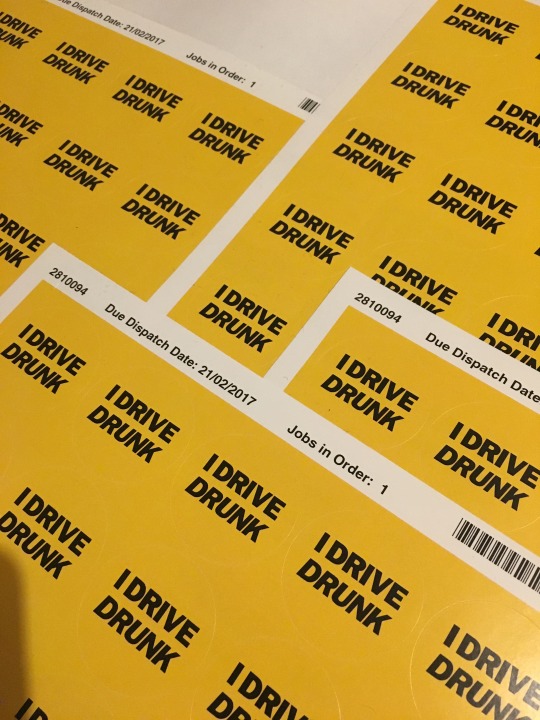
This week my stickers arrived and I took to the streets of Hull to try and get people to wear (or preferably not wear) them. Overall this experiment turned out to be kind of a waste of time, as I didn’t really know wether or not people had worn the stickers or not. I linked to an instagram account on the back of the sticker - but nobody seemed to respond.
Despite this I carried on with the sticker idea - testing out what it would look like if one was completely covered in the stickers. An ‘inescapable label’ (lol)

I felt the outcome of this experiment looked quite daunting and almost ‘surreal’. So decided to take this route further. Firstly, I redesigned my stickers to make them a bit more impactful.
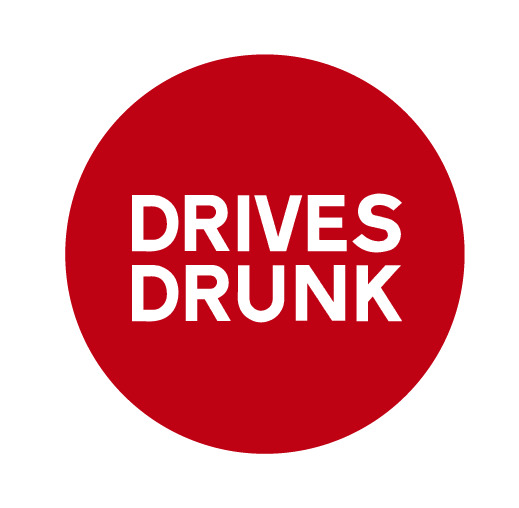
I used red to give more connotation of danger, and the british transport font to help the stickers resonate more with driving.

I then ordered a load of condoms with my design printed on them. Still to this day unsure why I did this?
My Actor
After posting around on some casting websites with no real luck, my friend recommended that I get in contact with one of her actor friends. Luckily he turned out to be perfect for the part, with a sort of ‘mainstream lad’ish look. But also quite a dark look about him.
Lewis Lilley - Showreel
vimeo
The Shoot
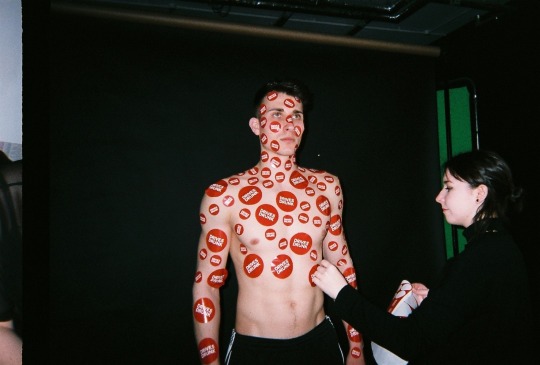
The shoot day was a lot of fun. There were a couple of problems; one being not having an access to a dolly (despite being told there would be one in the studio). Another being how abnormally tall my actor turned out to be - appearing taller than the backdrop in the shot, This meant we had to shoot him whilst kneeling on the floor. This didn’t really turn out to be such a bad thing in the end. It actually helped to make him look more vulnerable.
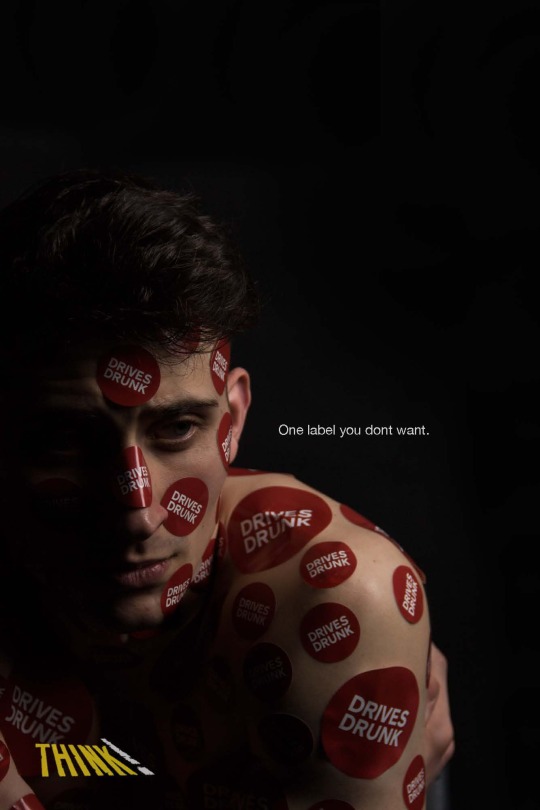
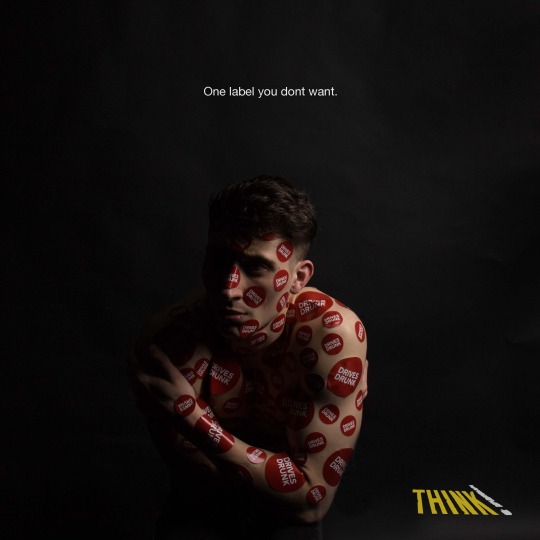

I also did some images featuring the condoms I got printed and a beer bottle marked ‘drives drunk’. However, these turned out a bit rubbish and don't really fit with the rest of my campaign - so I don’t think I’ll use them.


Bad Crit
After my crit I was told that my video outcome (linked below) worked quite well. However my print campaign did not. I was told that my posters looked like ‘A good album cover’ rather than an anti drink driving campaign (a compliment and an insult). Another comment was that my initial tinder research was strong, however it didn't seem to fit in with my campaign.
So to fix this i tried to incorporate the idea of social media and rejection into my campaign. The slowed down song ‘Getting to know you’ seemed to work quite well in my initial video to create a dark and eerie feel, so I continued this in the social media side. I made 2 videos using aftereffects picturing Dave Drivesdrunk in situations of rejection on social media - being swiped left on tinder and being a rejected friend request on Facebook.
Final Outcomes and YCN PDF
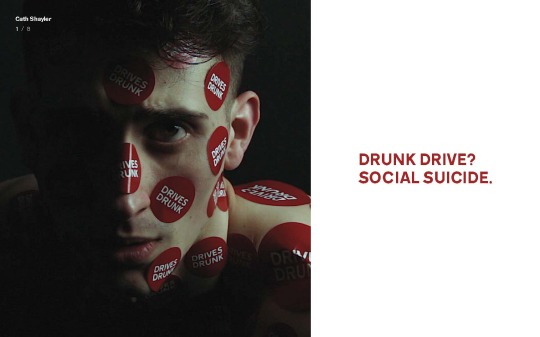



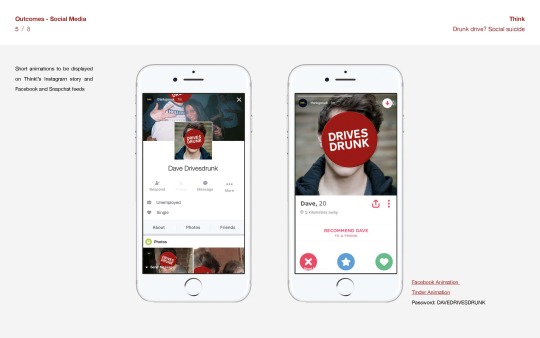

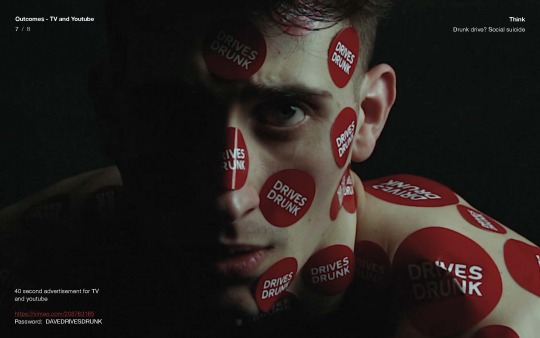
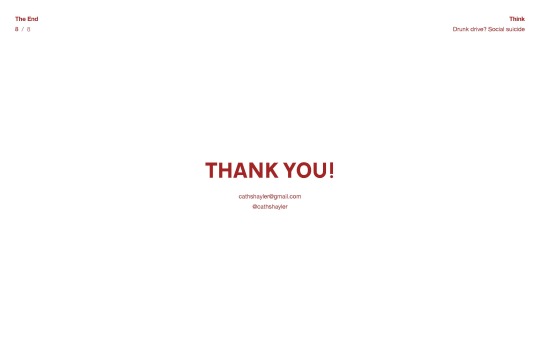
PASSWORD FOR ALL: DAVEDRIVESDRUNK
vimeo
vimeo
vimeo
0 notes